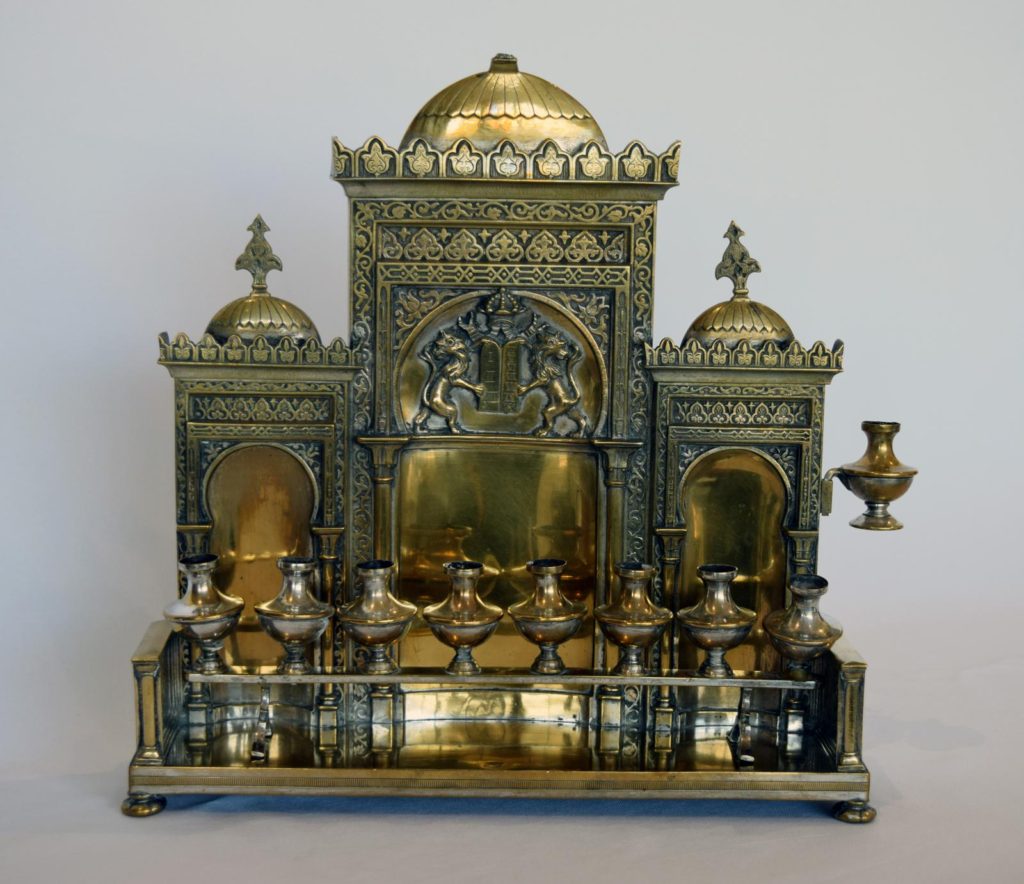Hanukkiah (Hanukkah Lamp)
Bezalel School of Arts and Crafts
Silver
Jerusalem, 1915
Gift of Joseph B. and Olyn Horwitz
Hanukkah, a joyous winter holiday, commemorates the military victory in 165 BCE of a small number of Jews, led by Judah Maccabee, over the oppressive ruling Syrian-Greek government, which had commanded the Jews to worship only Greek idols under penalty of death. When the Maccabees reconquered Jerusalem, they found that the Syrians had desecrated the Temple. According to the Talmud, a commentary on the Torah, the Maccabees cleansed and rededicated the Temple by lighting its seven-branched menorah, or candelabrum, with a small amount of oil that remained. Miraculously, the oil, enough for only one day, burned for the eight days of the Festival of Dedication—Hanukkah—in Hebrew.
To observe the victory and the miracle, Hanukkah lights are kindled for eight days. The candleholder is called a Hanukkiah, a Hanukkah lamp, or a menorah. The hanukkiah holds nine candles. Since the light of the hanukkiah may not be used for work or illumination, a shamash, or servant light, is lit first and used to kindle the others. On the first night of Hanukkah, one light is lit, with an additional candle lit on each subsequent night. Traditionally, the lighted Hanukkah lamp is placed near a window in the home.
Hanukkiot exist in a multitude of styles and materials, and tremendous creativity has been shown in their manufacture. Historically, there are two characteristic forms of the Hanukkah lamp. The first is patterned after the seven-branched menorah of the Second Temple. The second category of Hanukkah lamp is the “bench” or back-walled lamp that could be hung in a window or on a wall so that it could be seen from the outside of the house, as prescribed by the Talmud. This hanukkiah is an example of the “bench” style.
This large hanukkiah measures 1 foot tall and combines the decoration typically associated with Islamic art and marries the design to a more classic European design. The lamp was inspired by the Moorish synagogue architecture that was popular in Europe during the mid-nineteenth century. A reflection of this eastern trend of architecture can also be seen at Cincinnati’s Plum Street Temple, which was completed in 1866. This hanukkiah was originally meant to be used as an oil lamp, but candleholders have been added. The back wall of the Hanukkah lamp features a common Jewish motif of lions supporting the tablets of the Ten Commandments and is reminiscent of the design of European Torah arks at the time.

